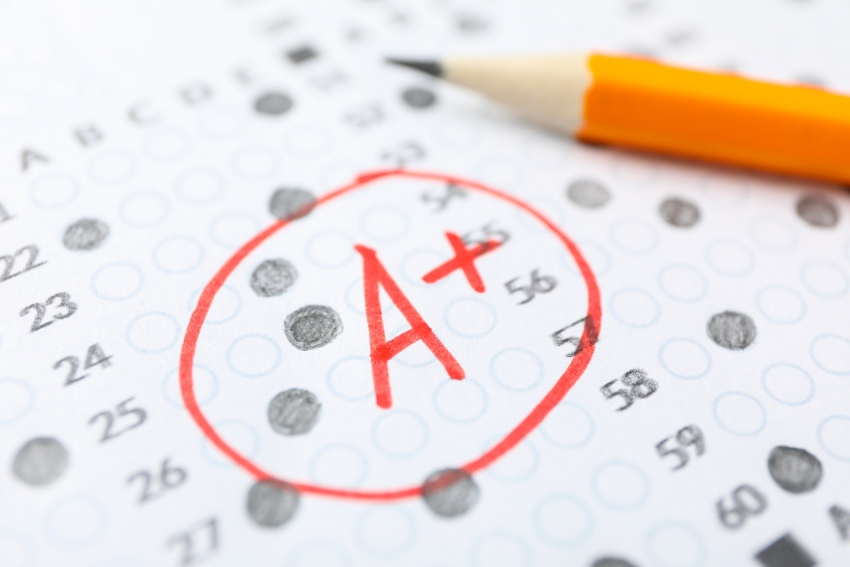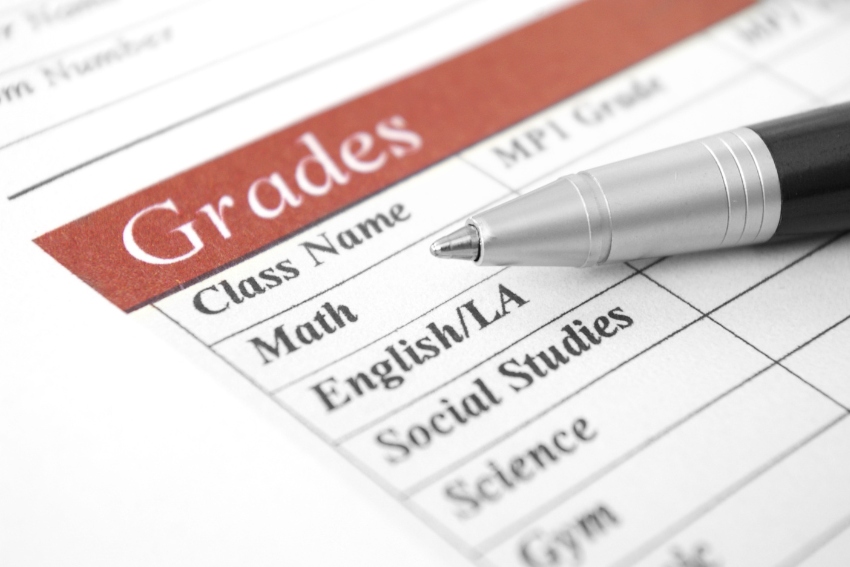Understanding how grades are assigned in examinations is a critical aspect of the academic journey for students, educators, and parents. With Pearson Edexcel being a leading exam board in the UK, offering a wide range of academic and vocational qualifications, the mechanism of grade boundaries under this board is of particular interest to many.
This blog post explains Pearson Edexcel grade boundaries, detailing what they are, how exam boards determine them, and why they matter in grading process. Whether you’re preparing for upcoming exams or trying to understand the assessment process, this guide helps clarify the complexities of grade boundaries and gives you the knowledge to navigate your academic journey with confidence.
Here’s what we will cover:
Pearson Edexcel GCSE Grade Boundaries
| Subject Title | Maximum mark | 9 | 8 | 7 | 6 | 5 | 4 | 3 | 2 | 1 | |
| Mathematics (Foundation) | 240 | – | – | – | – | 182 | 147 | 109 | 71 | 33 | |
| Mathematics (Higher) | 240 | 203 | 174 | 145 | 112 | 79 | 47 | 31 | – | – | |
| English Language | 160 | 131 | 122 | 113 | 102 | 91 | 80 | 58 | 36 | 15 | |
| English Literature | 160 | 132 | 121 | 110 | 95 | 81 | 67 | 49 | 31 | 13 | |
| History | 168 | 147 | 133 | 120 | 105 | 90 | 76 | 55 | 34 | 14 |
For more GCSE Subjects and their grade boundaries visit Edexcel’s official website:
Pearson Edexcel A-level Grade Boundaries
| Subject Title | Maximum mark | A* | A | B | C | D | E | |
| Mathematics | 300 | 244 | 196 | 158 | 121 | 84 | 47 | |
| Further Mathematics | 300 | 235 | 199 | 165 | 132 | 99 | 66 | |
| English Language | 250 | 177 | 159 | 133 | 107 | 81 | 56 | |
| English Language & Literature | 300 | 232 | 211 | 179 | 147 | 116 | 85 | |
| History | 200 | 174 | 157 | 132 | 108 | 84 | 60 |
For more A-level Subjects and their grade boundaries visit Edexcel’s official website:
What Are Grade Boundaries?
Grade boundaries are the thresholds set by examination boards that determine the grade a student receives based on their performance. These are essential components of the grading system, acting as the benchmarks that categorise student performance into various grades.
How Does Grading in Edexcel Work?
The Pearson Edexcel examination board employs a comprehensive grading system that caters to both GCSE and A-level qualifications, each with its distinct grading scales to accurately reflect student achievement and readiness for future academic and career pursuits.

GCSE Grading
For GCSEs, Edexcel adopts the numerical grading scale that ranges from 9 to 1, aligning with the standard set across the UK. This scale was introduced to enhance differentiation among the highest performers and provide a more granular insight into students’ abilities:
- Grade 9: Represents exceptional achievement, signaling a level of performance above the traditional A* grade.
- Grades 8 and 7: Correspond to the old A* and A grades, respectively, identifying students who have demonstrated thorough knowledge and understanding of the subject matter.
- Grade 1: Indicates the minimum threshold of achievement within the qualification’s framework, ensuring that all graded students meet basic criteria.
A-Level Grading
For A-levels, Edexcel uses the traditional letter grading system from A* to E, with A* being the highest grade attainable. This grading system allows for detailed discrimination among high-achieving students, while also ensuring that each grade reflects a specific standard of knowledge and understanding:
- Grade A*: Awarded to students who have demonstrated a superior grasp of the subject material, exceeding the standard expected of an A grade.
- Grades A to E: Represent a range from excellent to satisfactory understanding of the subject, with each grade serving as a benchmark for specific levels of achievement.
- Grade E: Marks the minimum passing grade, indicating that the student has met the basic requirements of the qualification.
The establishment of these grading scales is pivotal for maintaining the integrity and consistency of the assessment process. By adjusting grade boundaries for each examination session, Edexcel ensures that the grades awarded accurately reflect the students’ performance in relation to the exam difficulty and the overall achievement standards. This meticulous approach to grading underlines Edexcel’s commitment to fairness, transparency, and excellence in educational assessment, enabling students to progress to further education or into the workforce with confidence in the value of their qualifications.
Are Edexcel Grade Boundaries Higher in 2024?
- The adjustment of grade boundaries is primarily driven by the need to ensure fairness in the grading process. If an exam is found to be more challenging than previous years, the boundaries may be lowered to account for this, maintaining a consistent standard for achieving each grade. Conversely, if the exam is easier, the boundaries might be raised. This flexibility is vital for upholding the integrity and fairness of the grading system.
- There are no fixed trends or quotas dictating that grade boundaries must move in a certain direction from one year to the next. The decisions are made after a detailed analysis of the current year’s exams and student performance. This analysis includes comparing outcomes across different boards, such as Edexcel and AQA, to ensure each student’s grade fairly reflects their work and achievement level AQA grade boundaries and Eduqas GCSE grade boundaries. The overarching objective in adjusting grade boundaries is to ensure fairness and consistency in grading.
- The overarching objective in adjusting grade boundaries is to ensure fairness and consistency in grading. This approach ensures examiners award grades that accurately reflect each student’s level of achievement, regardless of changes in exam difficulty or cohort performance. Their commitment to fairness supports the entire grading process, maintaining high standards and making grades a reliable measure of student ability and knowledge.
Considering Private Tutoring – Why Edumentors?
In the journey of academic achievement, especially when navigating the challenges of A-levels and GCSEs, students often seek additional support to enhance their learning experience. This is where the value of private tutoring becomes evident, offering a bespoke learning approach tailored to each student’s unique needs and learning style. Edumentors, an innovative online tutoring platform, stands out by connecting students with A-level and GCSE tutors who are not only academically proficient but also relatable, being student-teachers from the UK’s top universities.
Why Consider Private Tutoring with Edumentors?
- Personalised Learning: Each student has their own pace and style of learning. Edumentors provides a personalised learning experience that can adapt to individual needs, strengths, and weaknesses, ensuring that every student can maximize their academic potential.
- Insights from Current Students: Tutors from Edumentors, being current students at leading UK universities, bring fresh, relevant insights and knowledge. They can relate to the academic and psychological pressures their tutees face, providing not just academic support but also mentorship and guidance.
- Cutting-Edge Knowledge: The tutors at Edumentors are engaged in current studies themselves, meaning they offer up-to-date knowledge and techniques, alongside tips and insights that have helped them succeed. This can be particularly beneficial for subjects that rapidly evolve.
- Flexible and Convenient: Being an online platform, Edumentors allows for a flexible tutoring schedule that can fit around the student’s existing commitments. This flexibility ensures that tutoring sessions can be more effectively integrated into the student’s life, making it a convenient option for busy families.
- Boosting Confidence and Performance: Beyond academic knowledge, private tutoring with Edumentors can significantly boost a student’s confidence. Understanding the material thoroughly with the help of a tutor who can break down complex concepts into more manageable parts can transform a student’s outlook on challenging subjects, leading to improved performance in exams.









